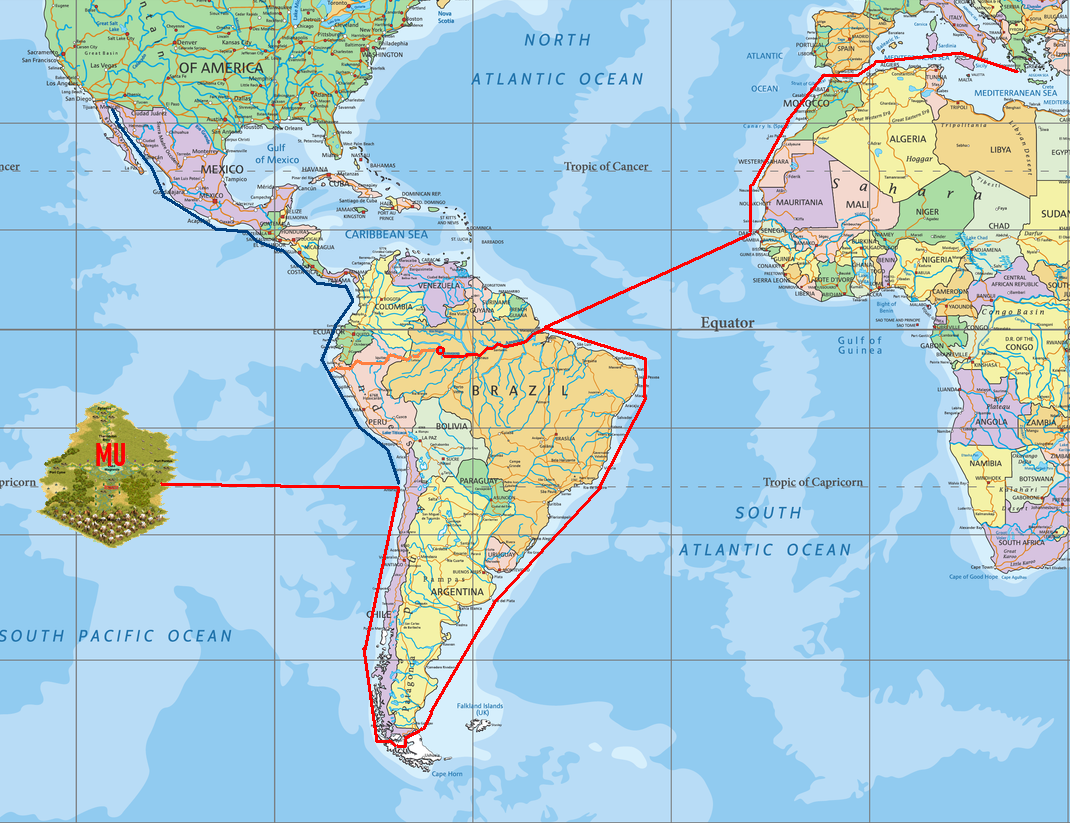Murovian Empire (ANS)
Return to Fictional Navy's Page:
Return to Index page:
Go to Amazonian Ship Page:
The land of Mu was first recorded as being "discovered" by
Captain Samuel Wallis of the British Royal Navy in 1767.
He anchored the H.M.S. Dolphin
off the coast of Mu on June 23, 1767, and claimed the land for King George
III. Shortly
after, unaware of Wallis's arrival, French explorer Louis-Antoine de
Bougainville landed on the opposite side of Mu and claimed it for France. This was the first recorded contact with European nations. They were in
for a shock.
The 'Amazon' tribe/nation was first heard of with the Trojan Wars and the 12
Labours of Heracles. For their part in the Trojan Wars the Amazons were expelled
from their lands around the Black Sea to become nomadic for a few years. The
Amazons rallied together and decided to leave the Mediterranean area behind. To
do this the Amazons raided and took many galleys one after the other. With their
people loaded aboard the Fleet, it sailed for the Pillars of Hercules and
the unknown waters and lands beyond. About a third of the fleet was lost during
their travels. A great loss of irreplaceable people.
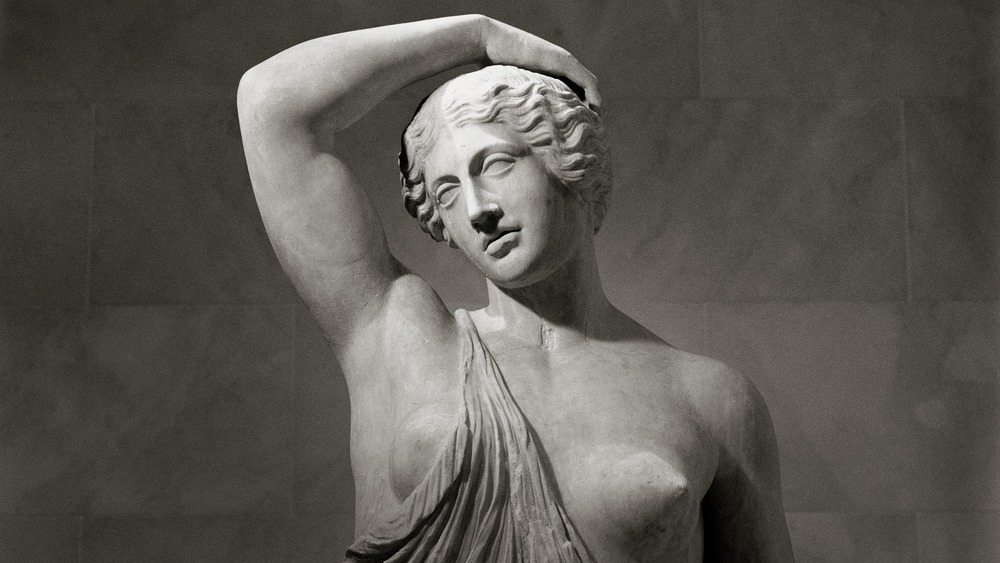
First 'Queen' of the Sisterhood - Agave. Leading the Fleet to Mu, and setting it
on course to greatness.
The fleet crossed the Atlantic at the shortest point between what we know as
Africa and South America. Sailing on the ships came across the mouth of a great
river. A third of the remaining vessels elected to explore this great new land
and found a new settlement. This land became Amazonia, the river the mighty
Amazon. Thus started the tales of the great woman of the Amazon nation.
The rest of the fleet kept sailing south to what seemed like the end of the
world, there they turned the corner through storms that accounted for most of
the losses to the fleet. Sailing north again the ships were grateful for the
balmier weather. The coast they sailed along was rocky and inhospitable, then
turned to desert. At this point there was real despair that a new homeland
could be found. Then a sign came from the west that the Queen decided must be
followed and the fleet turned west out into the open ocean sailing for nearly
two weeks before the call of 'Land Ho' was heard. What could be seen was green
and lush. The new land was to be called 'Mu' and it would house the Murovian
Empire. These Amazon settlers arrived on Mu in the 8th century BC. Just over two
thousand people arrived on Mu. The hierarchy of the Amazon Sisterhood were very
careful with their breeding program. They wanted to keep producing the big
strong women that were the Amazons, but they also had to avoid the trap of
inbreeding and the problems that could cause.
(Red) -
Trip of the Amazon Fleet. (Blue) - The search for breeding stock.
(Orange) - The Amazonian Trade Route.
The Sisterhood had seen the inhabitants of the coast of Atacama, small wiry men
and women that would not enhance their breeding program but would be suitable as
slaves to improve the Empire. A priority was given to search north of Atacama to
see if a better class of men and women could be found to assist with adding to
the population of Murovia. To be able to cross the sea between Mu and Atacama
would require better vessels than the oared galleys that made up the bulk of the
fleet that arrived on Mu. Experiments were undertaken on the galley and what
they ended up with was a galley with two sails, still with oars, but to stop the
ship from capsizing, a centreboard was fitted to project 2 meters below the
waterline. The board was mounted in such a way that it could be raised to allow
the ship to beach on land.
Building the City of Smyrna, the Sisterhood has already incorporated many other
peoples into its breeding program.
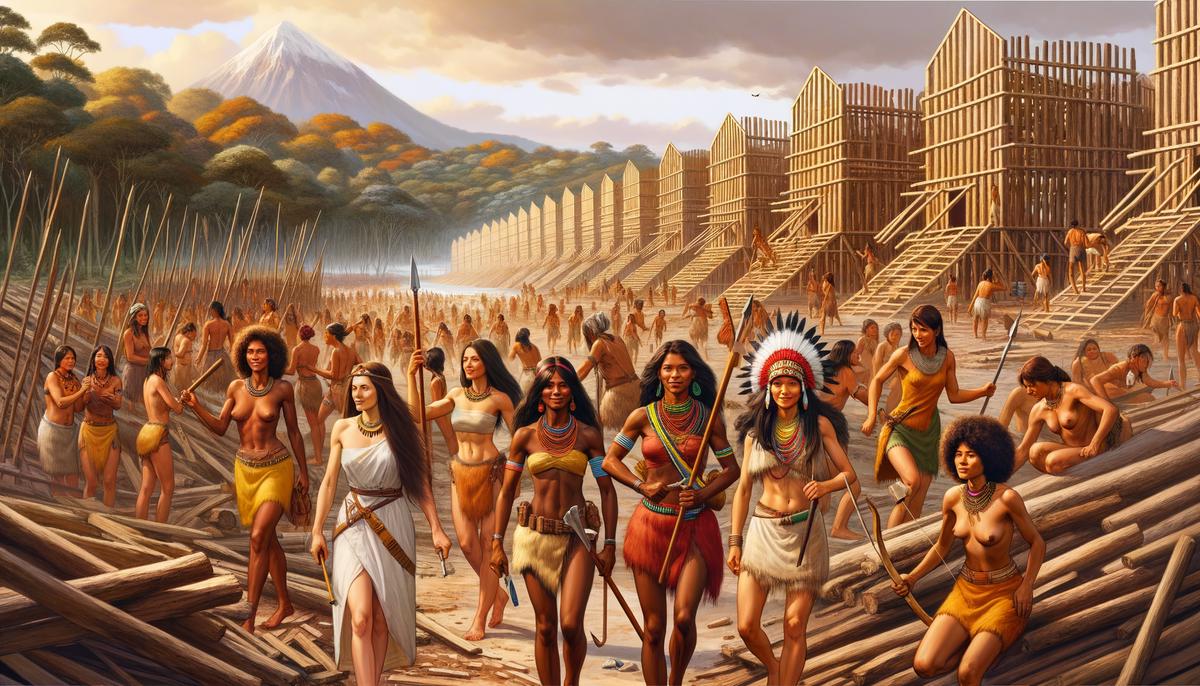
Six of these new vessels were converted and sent to explore north of the Atacama
coast. Weeks of travel and still the mighty mountain range was in view just
inland of the coast. The peoples were the same as further south, unsuitable!
While the navigation instruments were rudimentary the Amazons were able to
deduce what would be about the level of the Amazon group that had gone into the
interior of the country on the other side of this mighty land. A group of
trackers and hunters were landed at a well documented spot that would be easy to
find from the sea. This group was to find a pass through the mountain range
before them, to see if they could make contact with the River Amazons. It was
felt if contact and then a trade route could be founded between the groups, this
would be beneficial to both.
The further north the ships sailed, the better the peoples were. All were
swarthy to dark hued skin colours which would suit the olive skinned Amazons
just fine. The ships entered a long gulf which when it terminated gave onto a
land of mainly flat plains with bits of desert. The people here were perfect for
the Sisterhoods breeding program. The inhabitants were as tall as the Amazons
and the men were well built and muscular. Where they landed was a small village
with about twenty tents and 30-40 horses. One thing the Amazons had left behind
in Europe was their horses. Finding another source of horses would be almost as
good as new recruits. The Amazons swarmed ashore, stunning the inhabitants as
these bare breasted women in just skirts attacked them. Shock won the day and
the whole village was taken with only a couple of deaths on either side. The
Amazons loaded all of the captives and horses aboard ship and set sail on the
return journey. The next foray to this new land would require a larger
contingent of both fighters and ships to bring back even more.
Amazon horse cavalry.
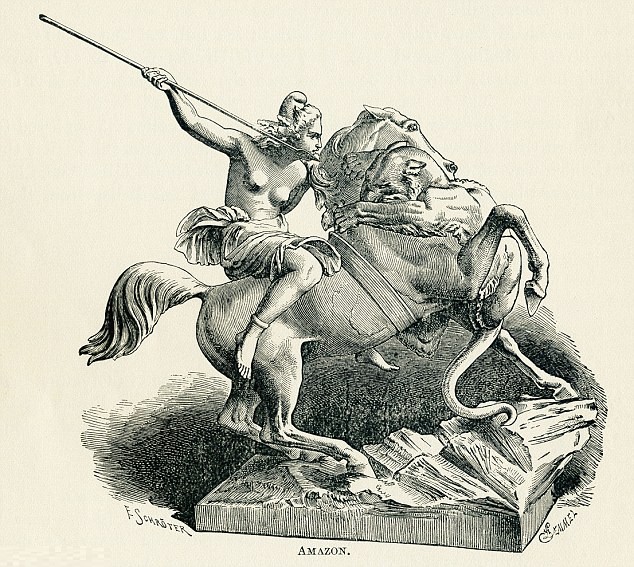
The journey to and from the Indian lands took nearly a year. This allowed both
sides to learn about the tactics of the other and many bitter fights took place
between the two sides. Generally the advanced tactics and variations of the
Amazons would carry the day, but if the Indian horse bowmen got into action they
could give the Amazons a mauling. It took time for the sides to be able to
communicate. Slaves taken in the first raid helped the Amazons to learn the
Indian language. Once both sides could communicate deals could be done instead
of warfare. Both sides now had respect for each others fighting abilities.
Finding out what both sides needed most lead to trade between the nations. It
was found that the Indian Nations often had border conflicts during which slaves
and horses could be taken and traded with the Amazons. For the Amazons part,
they could provide their Indian friends with access to better technology in many
areas.
The Amazons had secured their future.
Early Sisterhood Leadership group. Hippolyte, Andromache, Hecate, and Euryale.
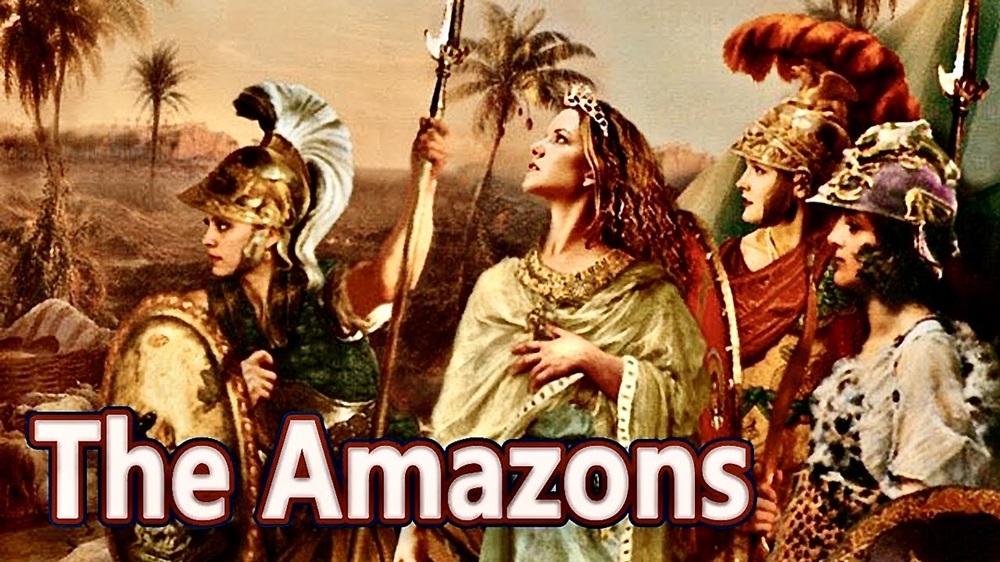
Fast forwarding to contact with the European nations of France and England. Both
ships made landing only to be overwhelmed by far superior forces. The Amazons
had learnt about how the European Nations had progressed through intermittent
contact with explorers that found one or other of the Amazon Nations. Those
explorers never returned. The information they possessed went to the Amazons,
one way or another. The Amazons were not squeamish, if torture was
required then so be it. The French and British ships were detained in Moravian
waters while the Amazons learnt all there was to know and learn. Technology,
language, history and world events, all knowledge the Amazon Nation required to
deal with the flood of explorers and 'freebooters' (Pirates) that would flock to
Mu to try and take advantage of what would be seen as a weak country run by
women. The Amazons would have to fight. From the time the two ships were
released to return to Europe, the Sisterhood felt they would have at least 18
months to 2 years to prepare.
The British ship had been held at Port Cyme, the
French ship at Port Pontus. Neither ship had been given the chance to explore
the coast of Mu, and both were told to leave under pain of being sunk, and the
crews slaughtered, if these orders were broken. Both ships took this seriously
and left Moravian waters directly. Both ships had been stripped of all but a
couple of guns each. The Amazons had a head start on iron guns.
Mu was a land of plenty, and once the Amazons new what to look for, more
discoveries of iron and coal in the Pygela Mountains gave rise to more modern
foundries for the production of iron and steel than the Empire currently had.
Half a dozen ships crew from the ships had been retained on Mu to teach the
Amazons about modern warfare and weapons manufacturing.
The Moravian Empire was ready to join the Industrial Revolution.
The captured guns were fitted in the bows of the Xebec type ships that populated
the Amazonian Navy. These bow chasers would prove there worth time and again
over the next few years as ships tried to interfere with the Empire only to find
their ships being taken from them and added to the growing Amazon Navy.
New construction for the Amazon Navy cantered on Frigate sized vessels with
32-36 guns of about 18-24 pounder size. The information gathered from their
captives advised that these would be the size of vessel most likely to be sent
from Europe. None of the European powers would be able to spare a Fleet of
two-three deck 'battle' ships as this would unbalance the size of fleets that
faced each other in European waters.
Figurehead of a Mermaid aboard the Amazonian Fleet Flagship circa-1800
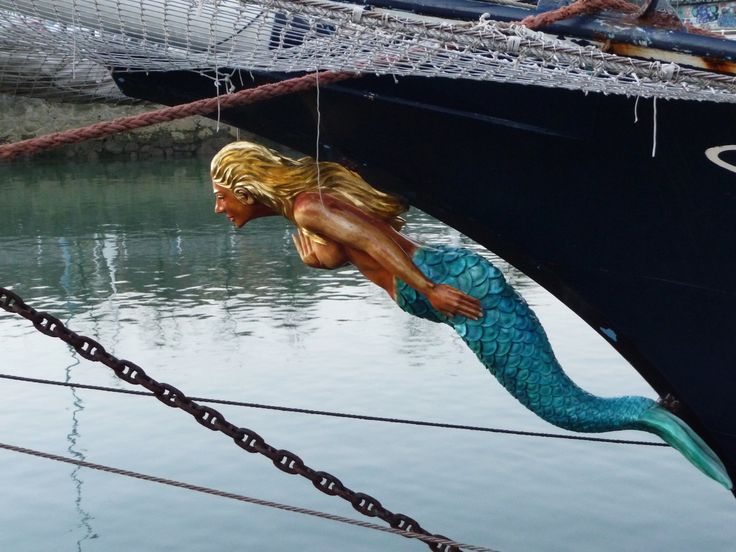
Any vessel that arrived in Moravian waters with anything other than peaceful
intentions would be seized or sunk, their crews becoming slaves. As had been
expected many pirate vessels tried their luck in looting the Empire only to find
themselves joining the Empire, permanently. Most for not very long, being worked
to death in the Pygela Mines.
The next 70-75 years were full of these minor warfare clashes. The Amazon Navy
became stronger and stronger with ships of all sizes coming off the slipways of
the three major ports. In 1840 it was learnt that England/Britain/Commonwealth
had installed a Queen to rule over them - Victoria. That was someone the Amazons
felt they could treat with as equals. Two of the ruling Sisterhood (that spoke
English) embarked aboard an Amazon Navy ship and headed for the court of the
Queen. The ensuing talks with the British Commonwealth leaders led to a treaty
between the two nations.
Mu, the Moravian Empire, and its Amazon Sisterhood leaders were ready to join
the world.
The era of the 'wooden walls' for ships, had proved tough for Mu. Whole forests
had disappeared to produce the 18th and 19th century Amazonian Fleet. The change
from wood to iron/steel ships suited the Amazons much better as the iron and
coal reserves, then the oilfields, were large and ready to supply the Moravian
Empire with all the modern equipment their armed forces would need to secure the
Empire from all enemies.
First two Amazonian Navy Battleships, Antiope, and Agave, 1865, based on HMS
Warrior of 1860.
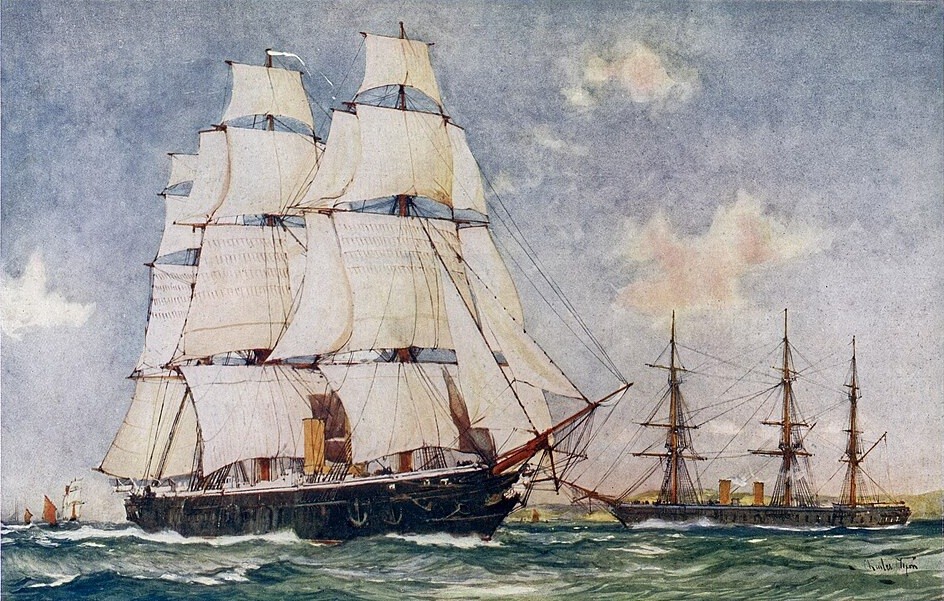
The South American Dreadnought Race:
Mu was included in the 'South American' battleship race for supremacy in the
area. Mu had a large advantage over the rest in that it had all the
infrastructure required to build their own capital ships. The limiting factor on
this, was the amount of money that could be invested in the fleet. The Amazonian
Navy had clear directives that it was to achieve. Those directives were what
would drive the direction the different types of ships would be built to.
The directives the fleet had to achieve were:
Maintain control over the coastline of MU.
The main Battlefleet is based at Ephesos and to be large enough to combat any
two fleets of South American origin. Normally a fleet of five dreadnoughts would
be required to achieve this.
Control the sea lane between Mu and the Panama Canal.
Escort of the transport ships that carried the jewels produced by Mu to Europe.
Escort from Panama to Europe was a joint effort with other European countries.
Be able to fulfil its obligations under the Smyrna Treaty with the
Commonwealth.
This was (from 1910) to have a Battle Squadron and support ships available to
aid the Commonwealth in time of war.
